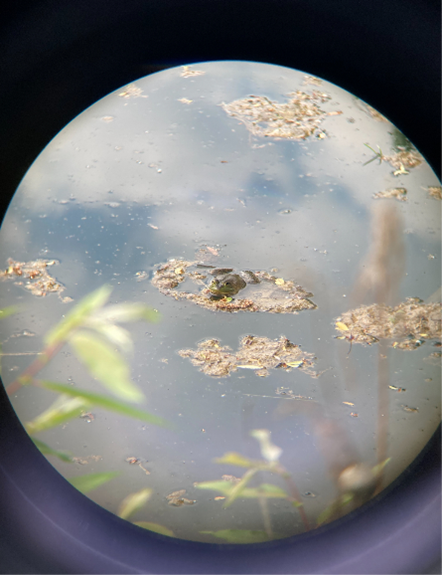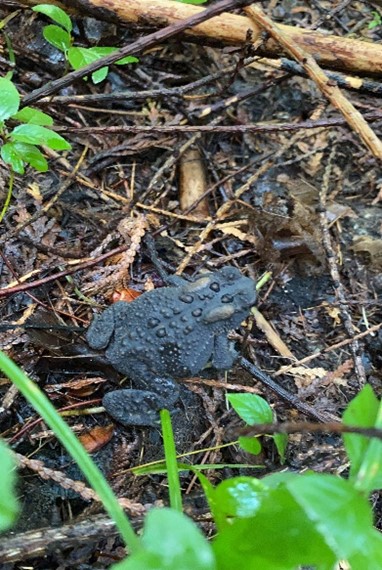Written by Kennedy Hanczyk, Project Biologist, Environmental Science, Pinchin Ltd.
Every year on March 20th, people from around the world come together to celebrate World Frog Day, a croak-tastic occasion dedicated to these remarkable amphibians. The important role frogs play in our ecosystem extends beyond their charming appearances and distinctive calls.
These amphibians act as sensitive indicators of ecosystem health, with their populations reflecting the over-all well being of their habitats. Their, permeable skin is highly sensitive to changes in water and air, which provides an early warning sign for pollution levels of an ecosystem. Unfortunately, many frog species are currently facing a decline due to habitat loss and pollution.
World Frog Day encourages us to reflect on the importance of conservation efforts to ensure a thriving population of these invaluable amphibians.
The Diversity of Frogs in Ontario
The rich diversity of Ontario’s landscapes, ranging from forests to wetlands and lakes, serves as habitat for various frog species. A few of the common frog species inhabiting Ontario vegetation communities are the Northern Leopard Frog (Lithobates pipiens) with its distinctive spots, the American Bullfrog (Lithobates catesbeianus) known for its deep resonant call, the Gray Treefrog (Hyla versicolor) that perfectly blends into the bark of trees, the Green Frogs (Rana palustris) with a call similar to a banjo string, and Spring Peeper (Pseudacris crucifer) with its high pitch chicken-like peeps.


Can Pinchin Help Protect Amphibians Living At My Project Site?
Pinchin’s Environmental Science (ENS) Group collaborates with clients to develop innovative solutions aimed at mitigating the impact of development on frogs and their associated habitats. A practical illustration of Pinchin’s commitment to amphibian protection and conservation can be found at a Site in Mississauga, Ontario for a proposed commercial development. For this project, Pinchin conducted an exhaustive background review to identify natural habitats for frogs. The Site’s natural features included wetlands, that held the potential to offer essential habitats for a variety of Ontario frog species. An amphibian salvage was conducted to relocate individual frogs from the Site to allow for the continuation of their life cycle in an undisturbed suitable habitat. During the salvage, Pinchin was able to successfully relocate numerous American Toads (Anaxyrus americanus) from the surveyed locations.
Another instance of Pinchin’s collaboration with amphibian conservation is in Napanee, Ontario. For this project, Pinchin was able to confirm potential significant wildlife habitat for amphibians on the Site including watercourses and wetlands.
What Can Pinchin Do?
One of Pinchin’s primary methodologies for detecting amphibians involves night surveys during the peak amphibian calling periods to detect the number and species of individuals. Through this survey method, Pinchin was able to identify several breeding amphibians on the Site and protect their associated habitats, while catering for the Clients development plans.
On World Frog Day 2024, Pinchin ENS celebrates the many partnerships for amphibian protection and conservation that we are a part of and looks forward to the future of more partnerships. To learn more about how our Environmental Science Group can help you navigate around amphibian and other wildlife habitats on your projects, contact our team or local Pinchin office.